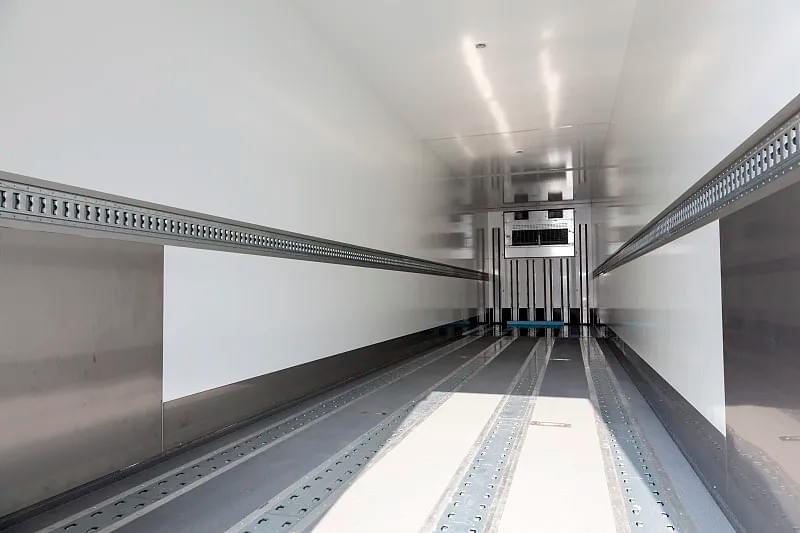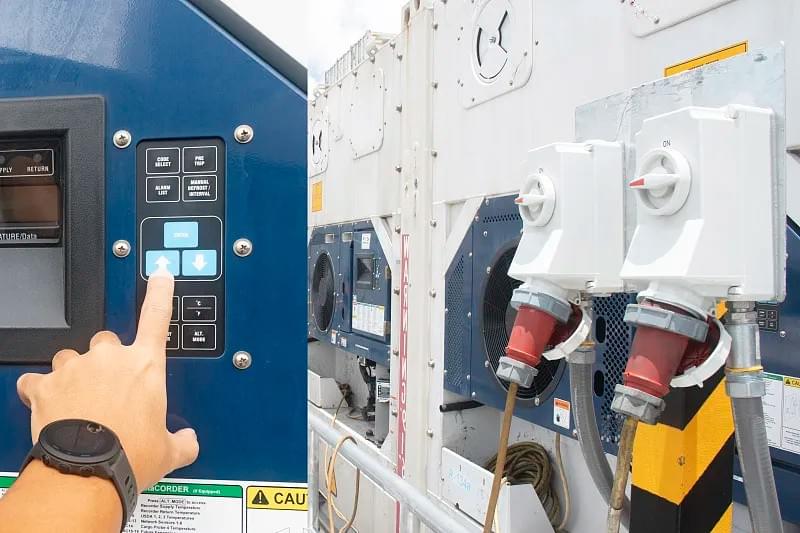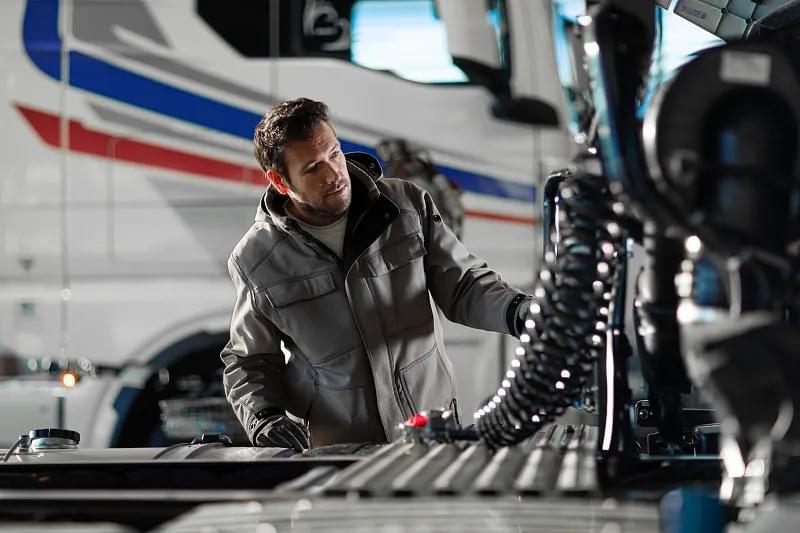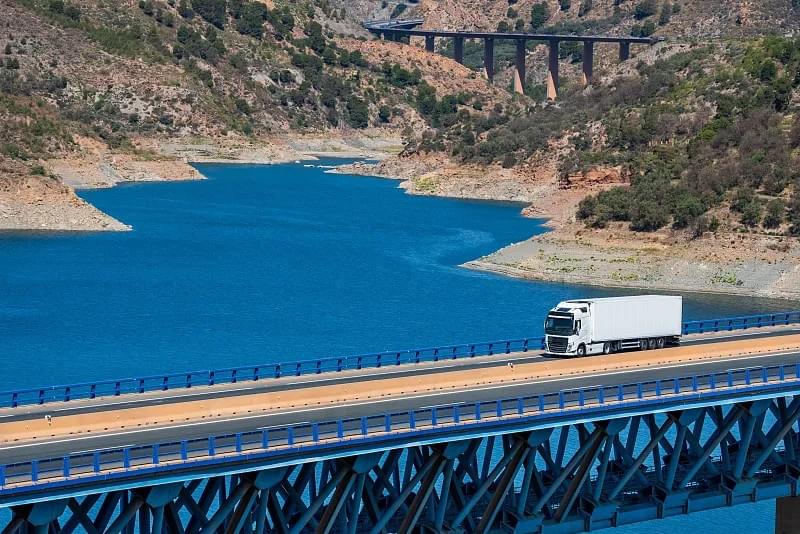The Significance of Refrigerated Trailers in Modern Logistics
In the vast landscape of modern logistics, refrigerated trailers have emerged as indispensable assets, playing a pivotal role in the global cold chain. These specialized vehicles are the unsung heroes that ensure the safe and timely transportation of temperature - sensitive goods, ranging from fresh produce and dairy products to life - saving pharmaceuticals and delicate flowers.
The cold chain is a complex and highly coordinated system that encompasses every stage of a product's journey, from the point of origin to the end - consumer. Refrigerated trailers are the crucial link that bridges the gaps between production facilities, distribution centers, and retail outlets. For instance, in the food industry, fresh fruits and vegetables harvested in a remote agricultural region need to be transported quickly to prevent spoilage. Refrigerated trailers maintain the optimal temperature and humidity conditions during transit, preserving the quality and nutritional value of these perishable items. This not only reduces food waste but also ensures that consumers have access to fresh and healthy produce all year round.
Similarly, in the pharmaceutical sector, the integrity of drugs and vaccines is of utmost importance. Many medications require specific temperature ranges to remain effective. Refrigerated trailers provide the reliable transportation solution that pharmaceutical companies need to distribute their products across the country or even globally. A single deviation from the required temperature can render a batch of vaccines ineffective, putting public health at risk. Thus, refrigerated trailers are essential for safeguarding the quality and efficacy of these life - saving products.
As the demand for fresh and high - quality products continues to grow, along with the expansion of international trade, the role of refrigerated trailers in the logistics ecosystem becomes even more pronounced. In the next sections, we will delve deeper into the various aspects of refrigerated trailers, including their components, types, applications, maintenance, and the future trends that are shaping this dynamic industry.

1. Standard Refrigerated Trailers
Standard refrigerated trailers are the workhorses of the cold - chain transportation industry. They come in a variety of sizes, with the most common length ranging from 28 feet to 53 feet. The interior width is typically around 8 feet, and the height can vary from 9 feet to 10 feet. These dimensions provide a generous cargo - carrying capacity, allowing them to transport large volumes of goods. For example, a 53 - foot standard refrigerated trailer can have a capacity of up to 3,000 cubic feet, which is equivalent to approximately 85 cubic meters. This makes it suitable for hauling a significant amount of fresh produce, such as thousands of crates of apples or oranges.
In terms of temperature control, standard refrigerated trailers are designed to maintain a temperature range between - 20°C (- 4°F) and 13°C (55°F). This wide range enables them to transport a diverse array of products, from frozen meats and ice cream to fresh dairy products like milk and yogurt. The refrigeration units installed on these trailers are usually powered by diesel engines, which provide reliable and continuous cooling during long - distance hauls.
2. Insulated Refrigerated Trailers
Insulated refrigerated trailers are engineered with a focus on minimizing heat transfer. They are constructed using high - performance insulation materials, such as polyurethane foam or expanded polystyrene (EPS). Polyurethane foam, for instance, has an extremely low thermal conductivity, which means it is highly effective at preventing heat from entering or leaving the trailer. This property allows the trailer to maintain a stable internal temperature with less energy consumption compared to non - insulated or less - insulated counterparts.
The thickness of the insulation in these trailers can range from 2 inches to 6 inches, depending on the specific requirements of the application. Thicker insulation provides greater thermal resistance, making the trailer more suitable for long - haul trips or for transporting products that are highly sensitive to temperature fluctuations. For example, when transporting expensive pharmaceuticals that need to be kept at a precise temperature within a narrow range, a trailer with 6 - inch - thick polyurethane foam insulation would be an ideal choice.
Another advantage of insulated refrigerated trailers is their ability to reduce the load on the refrigeration unit. Since less heat is infiltrating the trailer, the refrigeration system doesn't have to work as hard to maintain the desired temperature. This not only extends the lifespan of the refrigeration equipment but also reduces fuel consumption, making the transportation process more cost - effective and environmentally friendly.

3. Multitemperature Refrigerated Trailers
Multitemperature refrigerated trailers are a more advanced and specialized type of refrigerated vehicle. They are designed to have multiple temperature zones within a single trailer, allowing for the simultaneous transportation of different products with varying temperature requirements. This is achieved through the use of internal partitions and separate ventilation and refrigeration systems for each zone.
For example, one zone might be set to a temperature of - 18°C (0°F) to store frozen foods like frozen vegetables and frozen pizzas. Adjacent to this, another zone could be maintained at 4°C (39°F) for fresh produce such as lettuce, tomatoes, and cucumbers. A third zone might be kept at a slightly higher temperature, around 10°C (50°F), for items like certain types of cheeses or bakery products that require a cooler but not - frozen environment.
The internal layout of a multitemperature refrigerated trailer is carefully planned. The partitions are made of materials that are both insulating and durable, ensuring that the temperature in each zone remains stable and doesn't cross - contaminate. The refrigeration system is also more complex, with individual controls for each zone to precisely regulate the temperature. This type of trailer is particularly useful for distributors who need to deliver a variety of products in a single trip, as it maximizes the efficiency of the transportation process.
II. Key Characteristics
1. High - efficiency Cooling Systems
The cooling system is the heart of a refrigerated trailer, and its efficient operation is crucial for maintaining the desired temperature inside the trailer. Most refrigerated trailers are equipped with vapor - compression refrigeration systems. This system operates on a cycle that involves four main components: the compressor, the condenser, the expansion valve, and the evaporator.
The compressor is the first component in the cycle. It sucks in low - pressure, low - temperature refrigerant vapor from the evaporator and compresses it into a high - pressure, high - temperature vapor. This compression process increases the temperature of the refrigerant significantly, which is essential for the heat - transfer process that follows. For example, a typical compressor in a refrigerated trailer can increase the pressure of the refrigerant from around 20 - 30 psi (pounds per square inch) to over 200 psi.
Next, the high - pressure, high - temperature refrigerant vapor enters the condenser. In the condenser, the refrigerant releases its heat to the surrounding air or water (depending on the type of condenser). As the refrigerant loses heat, it condenses into a high - pressure liquid. This heat - release process is what cools down the air inside the trailer. The heat dissipated in the condenser can be quite substantial; in a large - capacity refrigerated trailer, the condenser may release several thousand watts of heat energy per hour.
After leaving the condenser, the high - pressure liquid refrigerant passes through an expansion valve. The expansion valve reduces the pressure of the refrigerant, causing it to expand and become a low - pressure, low - temperature liquid - vapor mixture. This sudden expansion also lowers the temperature of the refrigerant even further.
Finally, the low - pressure, low - temperature refrigerant mixture enters the evaporator. Inside the evaporator, the refrigerant absorbs heat from the air inside the trailer, causing the air to cool down. As the refrigerant absorbs heat, it vaporizes and returns to the compressor to start the cycle again. The efficiency of this cooling system directly impacts the quality of the goods being transported. A well - maintained and high - efficiency cooling system can ensure that the temperature inside the trailer remains stable within a very narrow range, protecting the integrity of temperature - sensitive products.
2. Superior Insulation
Insulation is another critical characteristic of refrigerated trailers, as it plays a vital role in reducing heat transfer between the inside and outside of the trailer. High - quality insulation materials are used to line the walls, floor, and ceiling of the trailer. One of the most commonly used insulation materials is polyurethane foam. Polyurethane foam has a very low thermal conductivity, typically in the range of 0.02 - 0.03 W/(m·K) (watts per meter - kelvin). This means that it is highly effective at preventing heat from passing through it.
The insulation material is installed in a way that ensures a tight and seamless fit. For example, in the construction of the trailer walls, the polyurethane foam is often sprayed or injected into the cavity between the inner and outer panels. This creates a continuous layer of insulation without any gaps or voids that could allow heat to infiltrate.
The thickness of the insulation also varies depending on the specific requirements of the trailer. For trailers used for long - distance transportation of highly perishable goods, such as fresh seafood that needs to be kept at a very low temperature, the insulation may be 4 - 6 inches thick. Thicker insulation provides greater thermal resistance, which means that less heat can enter the trailer from the outside. This, in turn, reduces the workload on the refrigeration system, as the system doesn't have to work as hard to maintain the desired temperature. As a result, the fuel consumption of the refrigeration unit is reduced, making the transportation process more cost - effective and environmentally friendly. Additionally, good insulation helps to prevent condensation from forming inside the trailer. Condensation can be a major problem as it can lead to the growth of mold and mildew, which can damage the goods being transported and the interior of the trailer itself.
3. Temperature Monitoring and Control
Accurate temperature monitoring and control are essential for the proper functioning of a refrigerated trailer. Modern refrigerated trailers are equipped with advanced temperature - monitoring devices that provide real - time data on the temperature inside the trailer. These devices are usually sensors that are strategically placed at various locations within the trailer to ensure comprehensive coverage.
The temperature sensors are connected to a control panel, which displays the current temperature readings. The control panel also allows the operator to set the desired temperature range. For example, if the trailer is transporting fresh fruits that need to be kept at a temperature between 5°C (41°F) and 8°C (46°F), the operator can input these values into the control panel.

In addition to real - time monitoring and control, many modern refrigerated trailers also have data - logging capabilities. The temperature data is recorded at regular intervals, usually every few minutes. This data can be retrieved later for analysis, which is useful for quality control and compliance purposes. For example, in the pharmaceutical industry, strict regulations require that the temperature of drugs and vaccines be monitored and recorded throughout the transportation process. The data - logging feature of the refrigerated trailer allows pharmaceutical companies to demonstrate that their products have been transported under the proper temperature conditions, ensuring the safety and efficacy of the medications.
III. Applications
1. Food and Beverage Industry
The food and beverage industry is one of the largest consumers of refrigerated trailers. These trailers are used to transport a wide variety of products, ensuring that they reach consumers in the best possible condition. Dairy products, for instance, are highly perishable and require a cool environment to maintain their freshness. Milk, yogurt, cheese, and butter are all commonly transported in refrigerated trailers. The ideal temperature for transporting dairy products is usually around 2°C - 6°C (36°F - 43°F). At this temperature range, the growth of harmful bacteria is inhibited, and the products can maintain their taste, texture, and nutritional value for a longer period.
Seafood is another category that heavily relies on refrigerated trailers. Whether it's fresh fish, shrimp, or shellfish, these products need to be kept at low temperatures to prevent spoilage. The temperature for transporting seafood is often set between - 1°C and 3°C (30°F - 37°F). This helps to slow down the oxidation and decomposition processes that can lead to a loss of flavor, texture, and safety. Additionally, frozen foods such as ice cream, frozen dinners, and frozen fruits also require refrigerated transportation. These products are typically stored at temperatures below - 18°C (0°F) to keep them in a frozen state and maintain their quality.
In the beverage sector, refrigerated trailers are used to transport products like beer, juice, and bottled water. Cold - chain transportation is especially important for beer, as exposure to high temperatures can cause the beer to spoil, develop off - flavors, and reduce its shelf life. The optimal temperature for transporting beer is usually around 2°C - 8°C (36°F - 46°F).
2. Pharmaceutical Industry
The pharmaceutical industry has extremely strict requirements for the temperature during the transportation of drugs and vaccines. This is because the chemical and biological properties of these products are highly sensitive to temperature fluctuations. Many medications, especially biologics such as insulin, monoclonal antibodies, and vaccines, are made up of complex molecules. Even a slight deviation from the required temperature can cause these molecules to denature, which means they lose their original structure and function. For example, vaccines need to be kept within a very narrow temperature range, usually between 2°C - 8°C (36°F - 46°F). If the temperature exceeds this range, the vaccine may become ineffective, and when administered, it may not provide the expected protection against diseases, putting the health of the vaccinated individuals at risk.
To ensure the integrity of pharmaceutical products during transportation, refrigerated trailers used in this industry are equipped with advanced temperature - monitoring and control systems. These systems not only maintain the desired temperature but also record the temperature data throughout the journey. In case of any temperature deviations, immediate actions can be taken, such as adjusting the refrigeration settings or notifying the relevant parties. Additionally, pharmaceutical refrigerated trailers often have redundant refrigeration systems. This means that if one system fails, the backup system can take over to ensure continuous cooling and protect the valuable cargo.
3. Floriculture and Horticulture
The floriculture and horticulture industries also benefit greatly from refrigerated trailers. When it comes to transporting fresh flowers and live plants, maintaining the right temperature and humidity conditions is crucial. Flowers are delicate and can wilt quickly if not properly cared for during transportation. Most fresh - cut flowers, such as roses, lilies, and tulips, need to be kept at a temperature between 0°C - 5°C (32°F - 41°F). At this temperature range, the respiration rate of the flowers is reduced, which helps to slow down the aging process and extend their vase life.
Humidity is also an important factor. High - humidity environments can promote the growth of mold and fungi, which can damage the flowers. On the other hand, low - humidity conditions can cause the flowers to dry out. Therefore, refrigerated trailers for flower transportation are often equipped with humidity - control systems to maintain the relative humidity at around 85% - 95%.
Live plants, especially those that are being shipped long - distance or during extreme weather conditions, also require temperature - controlled transportation. Tropical plants, for example, need to be kept warm during cold - weather transportation, while some cold - hardy plants may need to be cooled during hot - weather shipments. The use of refrigerated trailers allows for the safe and successful transportation of a wide variety of plants, enabling nurseries and garden centers to offer a diverse range of products to consumers throughout the year.
IV. Maintenance and Care
1. Regular Inspection of Cooling Systems
Regular inspection of the cooling system is the cornerstone of ensuring the optimal performance of a refrigerated trailer. The cooling system is a complex assembly of components, and any malfunction in these parts can lead to temperature fluctuations inside the trailer, endangering the quality and safety of the transported goods.
Technicians should conduct a thorough check of the compressor, which is the powerhouse of the refrigeration cycle. They need to inspect for any signs of wear and tear, such as abnormal vibrations or strange noises. The oil level in the compressor should also be monitored regularly, as insufficient oil can cause overheating and premature failure of the compressor. A low - oil situation can lead to increased friction between the moving parts of the compressor, which not only reduces its efficiency but can also result in costly repairs or even replacement.
The condenser, where heat is dissipated from the refrigerant, should be examined for cleanliness. A dirty condenser, clogged with dust, debris, or insects, cannot release heat effectively. This causes the refrigerant to remain at a higher temperature and pressure, forcing the compressor to work harder. As a result, the overall efficiency of the cooling system decreases, and the fuel consumption of the refrigeration unit increases. Technicians can use compressed air or a specialized cleaning solution to remove the dirt from the condenser fins.
The expansion valve, which controls the flow of refrigerant into the evaporator, must be checked for proper operation. An incorrectly adjusted or malfunctioning expansion valve can disrupt the refrigerant flow, leading to inconsistent cooling performance. If the valve is stuck open, too much refrigerant may enter the evaporator, causing it to flood and reducing its cooling capacity. Conversely, if the valve is stuck closed, insufficient refrigerant will reach the evaporator, resulting in poor cooling.

2. Insulation Maintenance
Maintaining the integrity of the insulation in a refrigerated trailer is essential for minimizing heat transfer and ensuring energy - efficient operation. Over time, the insulation material can be damaged due to various factors such as physical impacts, vibrations during transportation, or exposure to moisture.
Regular visual inspections should be carried out to check for any signs of cracks, holes, or delamination in the insulation. Even a small crack in the insulation can significantly increase heat infiltration into the trailer. For example, a 1 - inch - wide crack in a 4 - inch - thick polyurethane foam insulation can allow enough heat to enter the trailer to raise the internal temperature by several degrees Celsius over a few hours, depending on the external temperature and the load inside the trailer.
If any damage is detected, it should be repaired immediately. Minor cracks can often be filled with a suitable insulation - compatible sealant. For larger holes or areas of delamination, the damaged section of the insulation may need to be replaced. When replacing insulation, it is crucial to use the same type and quality of material as the original to maintain the trailer's thermal performance.
Moisture is also a major enemy of insulation. Water can seep into the insulation material, reducing its thermal resistance. To prevent this, the exterior of the trailer should be regularly inspected for any signs of leaks, such as water stains or rust spots. Any leaks in the roof, doors, or walls should be repaired promptly to keep the insulation dry.
3. Cleaning and Sanitization
Cleaning and sanitizing the interior of the refrigerated trailer are of utmost importance to prevent cross - contamination and maintain the quality of the transported goods. After each trip, the trailer should be thoroughly cleaned to remove any residue, dirt, or spills. This is especially crucial when transporting food products or pharmaceuticals, as even a small amount of contaminants can spoil the entire load.
First, all debris and loose materials should be removed from the trailer. This can be done using a broom or a vacuum cleaner. Then, the walls, floor, and ceiling of the trailer should be washed with a suitable cleaning agent. For food - grade trailers, non - toxic and food - safe cleaning products are used to ensure that no harmful chemicals remain on the surfaces. Hot water and detergent can be effective in removing most types of dirt and stains.
After cleaning, the trailer needs to be sanitized to kill any bacteria, viruses, or other microorganisms that may be present. Sanitizing agents such as chlorine - based disinfectants or hydrogen peroxide can be used, depending on the nature of the goods being transported. The sanitizing solution should be applied evenly to all surfaces and allowed to sit for the recommended amount of time before being rinsed off.
It is also important to pay attention to the cleaning of the ventilation system. The air ducts and vents can accumulate dust, mold, and bacteria over time, which can then be circulated throughout the trailer. Regular cleaning of the ventilation system helps to maintain good air quality inside the trailer and prevent the spread of contaminants. Additionally, the doors and seals of the trailer should be cleaned and inspected regularly to ensure a tight seal, which helps to maintain the temperature inside the trailer and prevent the entry of external contaminants.

V. Future Trends
1. Technological Advancements
The future of refrigerated trailers is being shaped by rapid technological advancements. One of the most significant developments is the integration of smart temperature - control systems. These systems utilize advanced sensors and Internet of Things (IoT) technology to provide real - time monitoring and precise control of the temperature inside the trailer. For example, some smart temperature - control systems can adjust the cooling capacity of the refrigeration unit based on factors such as the external temperature, the type of goods being transported, and the rate of heat gain or loss within the trailer.
The use of sensors has become more sophisticated. In addition to basic temperature sensors, there are now humidity sensors, vibration sensors, and even sensors that can detect the quality of the air inside the trailer. Humidity sensors are crucial for products that are sensitive to moisture levels, such as certain types of pharmaceuticals and high - value artworks. Vibration sensors can alert operators to excessive vibrations during transportation, which could potentially damage the goods. Air - quality sensors can monitor for the presence of harmful gases or contaminants that could affect the quality of the cargo.
Another exciting technological trend is the exploration of new energy - efficient refrigeration technologies. For instance, some companies are researching the use of thermoelectric refrigeration, which operates on the principle of the Peltier effect. In a thermoelectric refrigeration system, an electric current is passed through a semiconductor material, creating a temperature difference between the two sides of the material. This temperature difference can be used to cool the interior of the trailer. Thermoelectric refrigeration systems have the potential to be more energy - efficient than traditional vapor - compression refrigeration systems, as they have fewer moving parts and can be precisely controlled. However, they are currently limited by their relatively low cooling capacity and high initial cost. But with ongoing research and development, these limitations may be overcome in the future, making thermoelectric refrigeration a viable option for refrigerated trailers.
2. Environmental Considerations
In an era of increasing environmental awareness, the refrigerated trailer industry is under pressure to reduce its environmental impact. One of the key areas of focus is the use of more environmentally friendly refrigerants. Traditional refrigerants, such as chlorofluorocarbons (CFCs) and hydrochlorofluorocarbons (HCFCs), have been found to have a significant negative impact on the ozone layer and contribute to global warming. As a result, there has been a global push to phase out these substances.
Newer refrigerants, such as hydrofluorocarbons (HFCs) and natural refrigerants like carbon dioxide (CO₂), ammonia (NH₃), and hydrocarbons, are being adopted. HFCs have a lower ozone - depletion potential compared to CFCs and HCFCs, but they still have a relatively high global - warming potential. Therefore, natural refrigerants are gaining more attention. Carbon dioxide, for example, is a non - flammable and non - toxic refrigerant with a very low global - warming potential. It is also abundant and inexpensive. However, using CO₂ as a refrigerant requires a higher - pressure system, which poses some engineering challenges. Ammonia is another natural refrigerant that is highly efficient and has a low environmental impact. But it is toxic and flammable, so strict safety measures need to be in place when using ammonia - based refrigeration systems.
Energy - saving technologies are also being developed and refined. Insulation materials with even better thermal - resistance properties are being developed, which can further reduce heat transfer and the energy required to maintain the desired temperature inside the trailer. Additionally, the design of refrigeration units is being optimized to improve their energy efficiency. Some new - generation refrigeration units are equipped with variable - speed drives, which can adjust the speed of the compressor and other components based on the cooling load. This allows the refrigeration unit to operate at a more efficient level, reducing energy consumption and emissions. As environmental regulations become more stringent in the coming years, the development and adoption of these environmentally friendly technologies in refrigerated trailers are expected to accelerate, driving the industry towards a more sustainable future.
Conclusion
Refrigerated trailers have become an integral part of various industries, playing a crucial role in maintaining the quality and integrity of temperature - sensitive goods during transportation. From the food and beverage industry, where they ensure the freshness of dairy products, seafood, and frozen foods, to the pharmaceutical industry, which relies on them to safeguard the efficacy of life - saving drugs and vaccines, and the floriculture and horticulture industries, where they help preserve the beauty and vitality of fresh flowers and live plants.
The continuous technological advancements in refrigerated trailer technology, such as smart temperature - control systems, sophisticated sensors, and the exploration of new energy - efficient refrigeration technologies, hold great promise for the future. These advancements not only improve the performance and efficiency of refrigerated trailers but also contribute to reducing their environmental impact. The shift towards more environmentally friendly refrigerants and energy - saving technologies is a positive step towards a sustainable future for the industry.
As the global demand for fresh, high - quality products continues to grow, and international trade expands further, the importance of refrigerated trailers will only increase. It is essential for industry players, policymakers, and researchers to pay close attention to the development of this field. By investing in research and development, promoting the adoption of new technologies, and strengthening regulations and standards, we can ensure that refrigerated trailers continue to meet the evolving needs of the market and contribute to a more efficient, sustainable, and healthy global supply chain. So, let's keep our eyes on the exciting developments in the world of refrigerated trailers and look forward to a future where temperature - controlled transportation becomes even more advanced and reliable.

